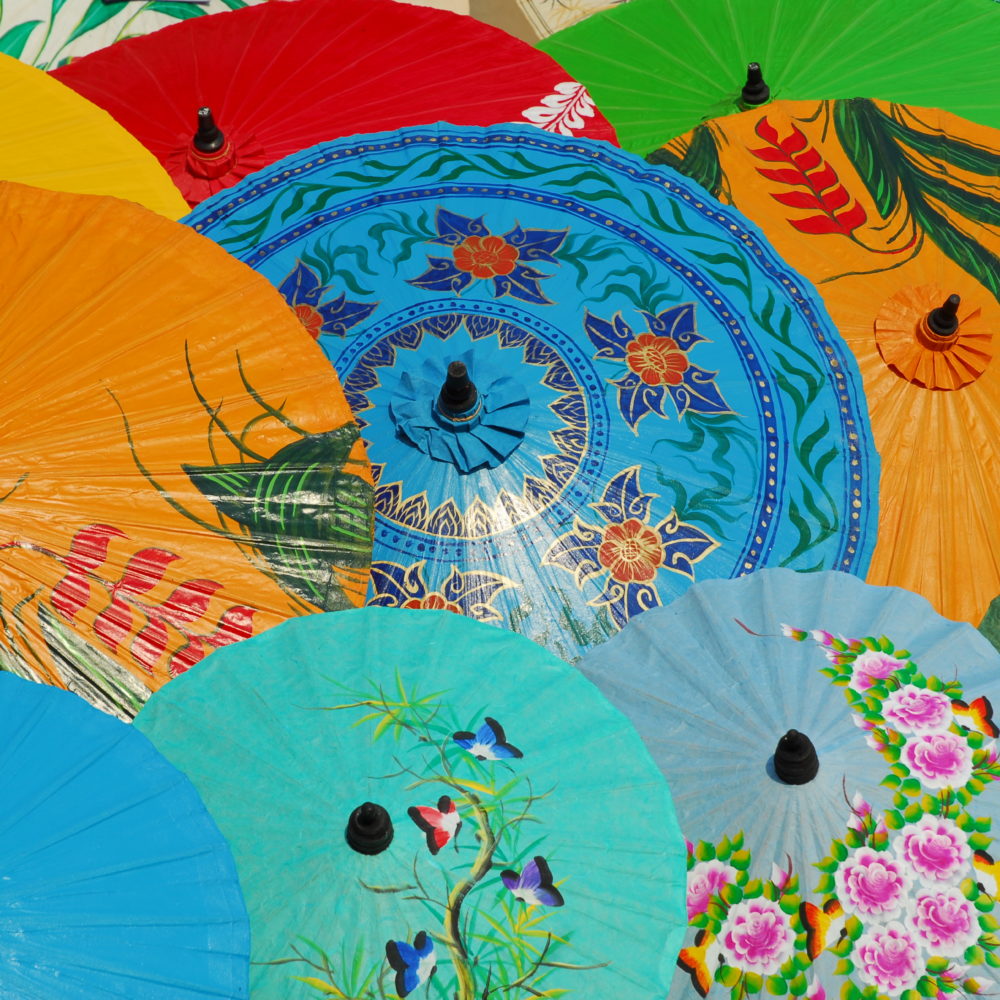I’ve visited Bangkok regularly for more than 25 years, and each time I take a taxi into town from the airport, I’m surprised at how much the city has changed since my previous visit. But even as skyscrapers punctuate Bangkok’s skyline, the city has managed to retain its essential charm: its food vendors on the streets, its narrow alleys with shops offering every manner of goods and services, and its street-corner spirit houses.
Unlike, say, Shanghai and Beijing, where the government decrees the destruction of entire neighborhoods in order to put up modern buildings, Bangkok has accommodated urban growth without sacrificing the small details that make the city so intriguing to Western eyes.
All three of our Thailand shows for the 2008 season were not only photographed by Joe Pontecorvo, but also produced by him. It was an enormous task, as those two jobs are usually handled by two people. Joe calls both Seattle and Bangkok home, so he was uniquely positioned to both understand what we like to include in our shows as well to bring us Bangkok, northern Thailand (our show titled “The Golden Trangle”), and southern Thailand (“The Andaman Coast”).
As a big fan of nature and wildlife (see his Mekong River show on the Discovery Channel or visit his web site, [www.joepontecorvo.com], Joe was especially delighted to shoot the elephants of northern Thailand and the sea in the south. He fell in love with Bangkok the first time he visited, which explains why he maintains a home there. As much as he likes living in—and shooting in—the outdoors, he is addicted to Thai street food (more on that below), and his enthusiasm for the capital city is obvious in the excitement of our Bangkok show.
Our sound engineer, Patrick Chan, joined us in Thailand from his home in Singapore, and along with enough portable equipment to launch satellites, he captured the sounds of the jungles of the north, the hongs of the south, and the urban jungle of Bangkok with a precision you won’t find on many television travel shows. He and Joe had worked together before, and the two of them charged up muddy hills, forged fast-flowing rivers, and seemed unaffected by long days in the heat of Bangkok.
I’m a huge fan of Thailand, as is Joe and our crew, and I think you’ll see that affection reflected in all three episodes.
Rudy’s Travel Tips
- Thais are among the friendliest people in the world. My personal explanation for that is that because Thailand has never been under foreign domination, Thais are just generally more pleasant than most other folks. Sure, there’s a coup every now and then, but lately they’ve been bloodless, and the king who technically remains above politics—like Britain’s royal family—works behind the scenes to make sure politicians behave themselves. In fact, the king (and, by extension, the royal family) is so revered that making jokes about royalty or criticizing the king is illegal. No one does that because the current king is universally adored. Yellow is the color of the king (because he was born on Monday, and each day has its own color), and you’ll find portraits of him all over Thailand, often draped with garlands of flowers.
- Thais hate to disappoint, so they will sometimes say “yes” even if they really want to say “no.” If they’re not certain of the answer when a foreign visitor asks directions, Thais may proffer advice anyway so as not to disappoint the questioner.
- It’s polite to greet strangers with a “wai,” a gesture in which your two hands are brought together as if in prayer and then raised to about nose level along with a slight nod of the head. It’s especially respectful to perform a wai when greeting persons older than you.
- I always suggest a first-time visitor to Bangkok experience a ride along the klongs, or canals, of the city. Head for The Oriental Pier, which is to the left as you face the famous Oriental hotel. There, you can hire a long-tail boat, wooden crafts that are slim, long and sit very low in the water. The driver steers with an enormous automobile engine mounted to the back of the craft. An unusually long drive shaft with an unusually small propeller allows the boat to navigate both the choppy waters of the powerful Chao Phraya River as well as shallow areas of the klongs that lead off the Chao Phraya. A 90-minute float along the klongs is a fascinating way to glimpse the way many Bangkok residents lived decades ago before most of the canals of the city Bangkok were filled up with dirt in the name of progress. —Important: Refuse the invitation from your boat driver to make a sightseeing stop at the local “snake farm.” It’s a rip off. If you’re into elaborate boats, however, you might want to request a stop at the museum of royal barges. These ceremonial crafts are hand-carved and hand-painted boats used for regal processions along the water of the Chao Phraya. It’ll only take you about ten minutes to see the boats.
- When travelers who’ve only heard about Bangkok think about visiting, they first worry about the traffic. No one is quite sure of the population of the city, but it’s big—maybe 10 to 12 million people. Probably more. And as the country has modernized and its residents have become more affluent, there are increasingly fewer motorbikes and more cars clogging the downtown streets. A three four-hour commute (each way) is not uncommon for office workers. You can beat the traffic by using the city’s “sky train,” or “the BTS,” as it’s known by locals. On the streets, tuk-tuks (pronounced “took-tooks”) are cheap and quick. But the fastest way to get around downtown Bangkok is on a motorcycle taxi.
- Always negotiate your fare with a tuk-tuk driver before you climb aboard one of the three-wheeled little machines from hell, as I’ve always thought of a tuk-tuk. (They’re noisy, spew fumes, and have no seatbelts.) Ask your hotel or any local what’s fair as a fare. You’ll always pay more than a Bangkok resident, but it’ll still be cheap.
- Motorcycle cabs are distinguished by the brightly colored vests—fuchsia and lime are my favorites–worn by their drivers. Just wave one down (as you would a taxi or tuk-tuk), and climb on behind your driver. (Again, negotiate your fare beforehand.) Every cycle I’ve hired has had a helmet for me to wear, and I’ve always been careful to keep my knees close to the body of the cycle—drivers weave in and out of traffic as if threading a needle. Which, of course, is why they’re the fastest way to get around.
- If you want more comfort and air conditioning, a taxi is the answer, and they’re quite inexpensive, as well, especially when compared to big-city prices in Western cities. Many luxury hotels have a fleet of shiny cars available for hire by the hour or day. The advantage to hiring one is that it comes with a driver who will wait for you while you shop or sightsee. You may lose a bit of the flavor of Bangkok street life, but if you have a good driver who can tell you about neighborhoods as you drive through town, that’s a plus. Tip taxi and hotel car drivers 10%.
- A 10% in restaurant is considered standard and generous.
- The second subject that comes up when Bangkok is mentioned is prostitution, which, unfortunately, is still a reason some tourists visit the city. The most notorious neighborhood in Bangkok for sex clubs is called Patpong, named after the man who is said to own the several city blocks where neon lights promise ribald entertainment and cheap beer. At some point, Mr. Patpong apparently realized that while he was making plenty of money leasing space to restaurants and sex bars, the pedestrian-only streets could also return revenue. Which is why if you visit Patpong today, you can hardly find the X-rated stuff because the streets are packed with vendors all in neat rows selling those items we all need more of such as t-shirts, belt buckles, and cigarette lighters. Beware pickpockets and other hustlers. The best thing about Patpong? If you’ve seen it once, you never have to return.
- In Patpong and along Silom Road are dozens of vendors selling counterfeit “luxury” watches and luggage as well as pirated DVDs, CDs, and computer software. Buy the $3 DVDs and CDs at your own risk. I’m the last guy to advocate purchasing counterfeit DVDs and CDs, but if you do buy one, check it out as soon as you can. If it’s defective, and if you can find the vendor who sold it to you, you can exchange it. US Customs agents will confiscate counterfeit Rolex watches and Louis Vuitton luggage as well as pirated DVDs and software if they spot you bringing that kind of material back into the US. So if you buy it, be willing to give it up. (And that’s not just an American thing—Australian custom agents are said to have dogs at airports able to sniff out bogus DVDs.)
- You’ll be amazed at the array of pirated purses and watches available from street vendors. Many will proffer entire catalogs from Yves St. Laurent or Louis Vuitton or, in the case of watches, Rolex, Omega, IWC, or other status-brand watchmakers. You pick out which model you want, and they disappear for a few minutes to bring you back your order. Where do they go? To lock boxes and upstairs offices they have around town where they stash their inventory so if they’re busted on the street they don’t lose too much product.
- There are massage establishments that offer heavenly massages for as little as $8 an hour. These are not to be confused with businesses that have signs promising massages, baths, and beautiful women. In the case of the latter, the emphasis is on separating you from your money for sex rather than a rehabilitative massage. The Wat Po temple complex is a must see, and it also happens to be a great place to get a massage as the temple operates a massage academy. The facility at the temple is often very busy so ask for the temple’s massage school that’s about a block away and head there for a serious, relaxing massage as the crew and I did. You’ll find other legitimate massage parlors all over town. And luxury hotels in Bangkok have some of the most splendid, over-the-top spas in the world. If you can take a few hours to spoil yourself with a treatment or two, you’ll never forget it.
- Street food is everywhere in Bangkok, and it would be a big mistake not to take advantage of that fact. I know there are some countries in which eating street food is risky, but Thailand isn’t one of them. Everything from grilled meat and fish to veggies and sweets are on offer, and I’d suggest one of everything. Thais are passionate about cleanliness, and eating street food is a way of life for even affluent city residents. Some sidewalk vendors have nearby tables and chairs for diners, and the prices are very, very reasonable. Often an entire family works a food stand, and after years of making a particular kind of noodle dish or tom yum gai (chicken in lemon grass soup), you can count on them being darn good at it.
- The best place to find a great, well-priced dinner from street vendors is along the side streets of Yaowarat Road in Chinatown. There, flames leap high as chefs fry whole fish laced with chilies and spices in huge, black woks. Colorful seating areas allow diners to enjoy their meals at a leisurely pace. Several large Bangkok department stores have major indoor food courts selling Thai, Chinese, Indian, and Malaysian dishes. Seating is available. Want some specific restaurant recommendations? Check out Joshua Kurlantzick’s piece, “Street Smarts,” in the Jan. 6, 2008, “Travel” section of the New York Times.







